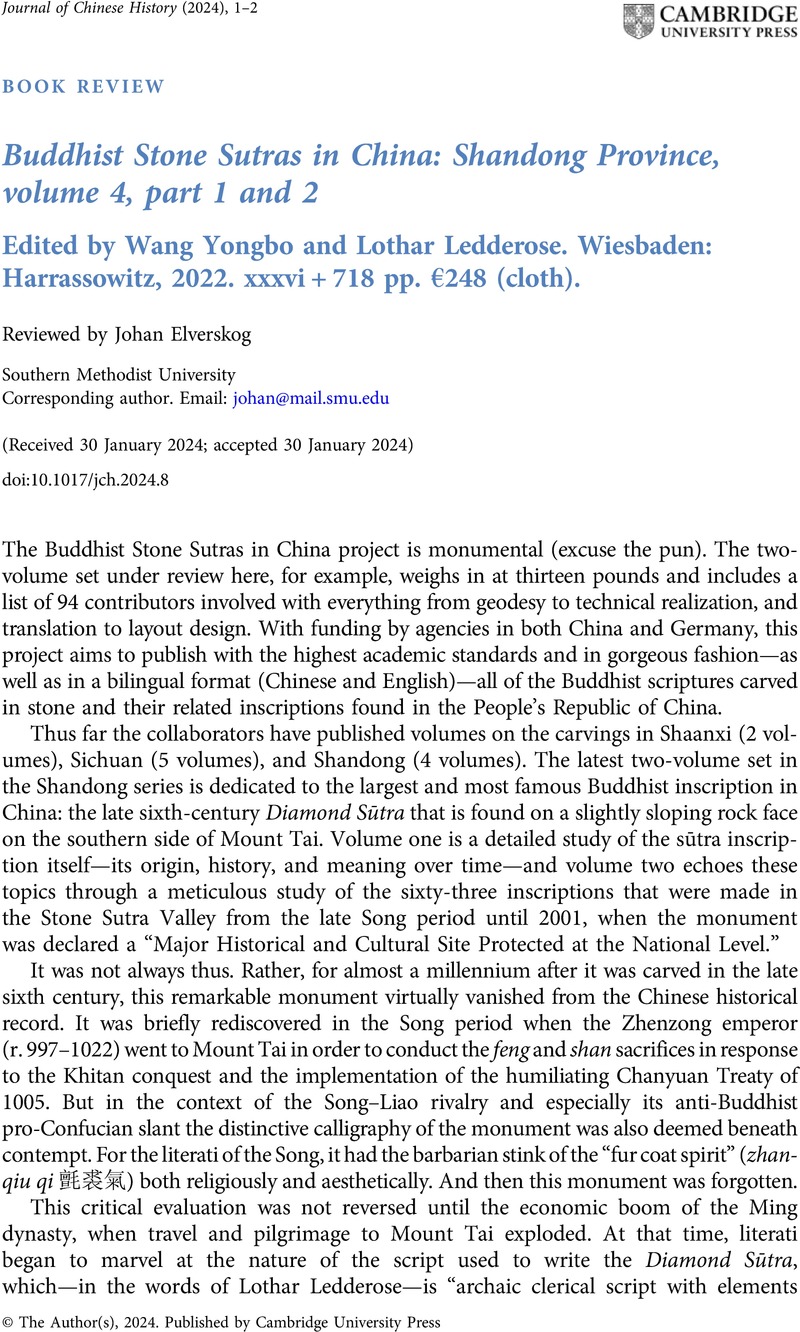No CrossRef data available.
Article contents
Buddhist Stone Sutras in China: Shandong Province, volume 4, part 1 and 2 Edited by Wang Yongbo and Lothar Ledderose. Wiesbaden: Harrassowitz, 2022. xxxvi + 718 pp. €248 (cloth).
Review products
Buddhist Stone Sutras in China: Shandong Province, volume 4, part 1 and 2 Edited by Wang Yongbo and Lothar Ledderose. Wiesbaden: Harrassowitz, 2022. xxxvi + 718 pp. €248 (cloth).
Published online by Cambridge University Press: 18 March 2024
Abstract
An abstract is not available for this content so a preview has been provided. Please use the Get access link above for information on how to access this content.

Information
- Type
- Book Review
- Information
- Copyright
- © The Author(s), 2024. Published by Cambridge University Press


